Listed below are projects focused on identifying FLC disease mechanisms and new therapeutic targets that have been funded by FCF.
Project summaries: Disease mechanism and target research
Timeframe: 2024 - 2026
Goal: Determine if targeting CDK7 could be a useful treatment approach for FLC.
Principal Investigator: Sean Ronnekleiv-Kelly, MD

Study overview: Unregulated proliferation of cells is a hallmark of cancer. In other words, cancer cells continue to divide and increase in number when normal cells would stop dividing. A family of 20 proteins known as cyclin-dependent kinases (CDKs) play key roles in the regulation of cell division and other fundamental cellular processes. While CDKs are found in both normal and cancer cells, they are frequently present at elevated levels in cancers and may promote uncontrolled cell proliferation. A particular CDK, CDK7, has been associated with rapid progression and poor prognosis of various cancers. CDK7 acts as a gatekeeper for cell division, and also regulates gene expression. For these reasons, it has become an attractive potential anticancer drug target.
Dr. Ronnekleiv-Kelly observed that CDK7 is present at significantly higher levels in FLC cells than in normal liver cells. Furthermore, collaborative studies indicate that CDK7 is required for the expression of certain genes that become “locked on” at high levels in FLC tumor cells due to the fusion protein that is found in virtually every case of FLC. Thus, CDK7 appears to be a element in the pathway that drives the transformation of normal liver cells into FLC cells.
The principal goal of the proposed work is to determine whether a drug that blocks the action of CDK7 has potential value to treat FLC. Specifically, the investigators will test the hypothesis that an inhibitor of CDK7’s protein kinase activity will prevent the production of crucial “downstream” proteins that are "turned on" by FLC's fusion protein, thereby halting the proliferation of the cancer cells.
Syros Pharmaceuticals, Inc. (Cambridge, MA) has developed a selective inhibitor of CDK7, SY-5609, that already has advanced into clinical trials in cancer patients. Preliminary data shows encouraging activity of SY-5609 against FLC cells. The study team will examine effects of CDK7 inhibition in several FLC cell model systems, PDX models, and slice cultures prepared from fresh human FLC tumors. They also will also work to understand the role of CDK7 in controlling the biochemical pathways that underlie the growth of FLC tumors.
If the results of this study are promising, they could set the stage for a clinical trial of CDK7 inhibition, alone or in combination with other drugs, in FLC patients.

Timeframe: 2024 – 2025
Study overview: Since the discovery in 2014 of the fusion gene (DNAJB1-PRKACA) that drives fibrolamellar carcinoma (FLC), a drug that would selectively inhibit or destroy the chimeric protein (DNAJ-PKAc) encoded by that gene has been considered a “holy grail” for FLC therapy. Such a drug must effectively target DNAJ-PKAc, while only having minimal activity against normal protein kinase A (PKA), which is essential for life.
In this study, a team of investigators will work with X-Chem (https://www.x-chemrx.com/), a chemistry service company, to identify molecules that bind tightly to DNAJ-PKAc, but do not bind well to either normal PKA or normal DNAJB1. This will be accomplished through a mass chemical selection process based on X-Chem’s unique asset – a DNA-encoded chemical library (DEL) of compounds. This technology will allow an astounding 12 billion different tool compounds to be reviewed to identify compounds that can selectively bind to FLC's fusion protein. DEL screens work by coupling chemical compounds to short DNA fragments that serve as “bar codes” that can identify the compounds with affinity to the tested targets. Despite the massive scope of the tests, the screening process can be rapidly carried out using highly automated machines that leverage all the advancements made in genomic analysis over the last decade. X-Chem is a leader in this cutting-edge technology.
If this step can be accomplished successfully, it will yield a set of chemical “hits” that meet strict criteria for selective binding to FLC's fusion protein. The path from there to a drug would then involve many subsequent steps.
Timeframe: 2023 - 2025
Goal: Investigate alternate means of therapeutically targeting DNAJ-PKAc
Principal Investigator: John Scott, PhD

Study overview: Previous work has established that the fusion protein interacts with large number of binding partners as compared to the native protein by increased association with the AKAP proteins (the latter acts as a scaffold). One of these binding partners is a protein called Bcl2-associated athanogene 2 (Bag 2). Bag2 interacts with an anti-apoptotic factor, Bcl-2 and binding of Bag2 with the fusion enzyme may be a prognosticator for advanced disease. Moreover, preliminary results from the previous study indicated that Bag2 may confer resistance of FLC tumors to chemotherapeutics. The team hypothesizes that the increased association of co-chaperones such as Bag 2, with the chimeric protein increases tumor survival, and possible chemoresistance. Additionally, the promiscous nature (ability to catalyze side reactions) of DNAJ-PKAc may affect the subcellular localization, allow unrestricted access to specific substrates and influence FLC tumor development.
The goals of the study are:
- Identifying if DNAJ-PKAc oncogenic partners such as Bag2, drive tumor survival and can be a marker for advanced stage of FLC.
- Determining the contribution of the signaling islands (i.e. spatial dysregulation of DNAJ-PKAc) to FLC as compared to the oncogenic binding partners.
- Advancing towards clinical trials any promising drug combinations that target DNAJ-PKAc signaling islands and other oncogenic binding partners of this fusion protein.
Timeframe: 2023 - 2025
Goal: Evaluate selective inhibitors of polo-like kinase 1 (PLK1) for effectiveness in human models of FLC
Principal Investigator: Taran Gujral, PhD


Study overview: Abormal cell signaling by the DNAJ-PKAc fusion protein kinase drives the uncontrolled growth of fibrolamellar carcinoma. Thus far, however, drugs that inhibit the fusion kinase also block the activity of normal PKA in many noncancerous cells, leading to toxicity that precludes their use to treat FLC. FCF, therefore, has supported multiple efforts to identify “downstream” steps in the biochemical signaling cascade initiated by DNAJ-PKAc that might be inhibited in FLC cells without causing excessive side effects.
Dr. Gujral’s lab has been developing new patient-derived xenograft (PDX) and cell culture models from human FLC tumors to facilitate the search for effective targeted drugs against this cancer. IOn previous work, Dr. Gujral identified one “druggable” protein kinase, named polo-like kinase 1 (PLK1), as a particularly good candidate for FLC therapy among the several hundred kinases specified in the human genome. Biochemical studies suggested that the abnormal DNAJ-PKAc fusion kinase, but not normal PKA, associates with PLK1 in cellular structures called centrosomes, which are critical for cell division (mitosis). Because of its importance in the regulation of cell multiplication, PLK1 already has been considered a good candidate for targeted cancer therapy. The Gujral team found that a known inhibitor of PLK1 significantly decreased the survival of FLC cells in lab cultures. The compound also decreased the growth of human FLC tumors in mice lacking a competent immune system (PDX models).
The proposed grant funding will support the evaluation in human FLC models of selective inhibitors of PLK1 that are currently in clinical development for other cancers. The PLK1 inhibitors to be evaluated are Onvansertib (Cardiff Oncology) and Plogosertib, also known as CYC140 (Cyclacel). The biopharmaceutical companies that are developing these drugs have agreed to provide them for the proposed study. The targeted kinase inhibitors will be tested both by themselves and in combination with “classical” chemotherapeutic agents known to damage DNA. Because PLK1 is important in DNA repair as well as in cell division, the investigators predict that it will be possible to identify a drug combination with synergistic anti-cancer activity.
If favorable results are identified, the work has the potential to lead to clinical trial(s) against FLC.
Timeframe: 2023 - 2024
Goal: Testing the drug zotatifin (eFT226) against human FLC tumors grown in mice
Principal Investigator: John Gordan, MD, PhD
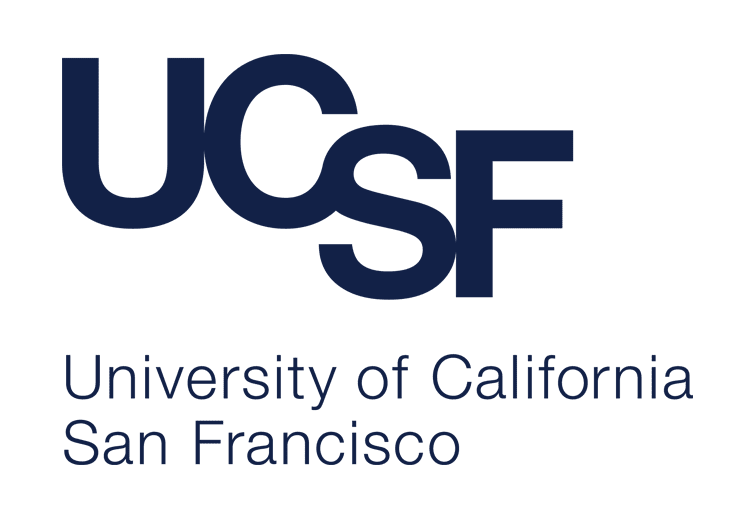
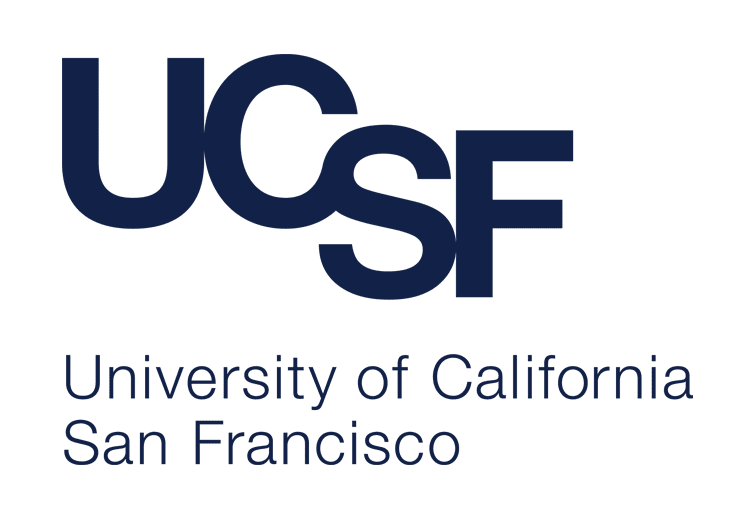
Study overview: This “proof of concept” study focuses on testing the drug zotatifin (eFT226) for activity against human FLC tumors grown in mice. This drug is being developed by eFFECTOR Therapeutics (Solana Beach, CA). The drug is currently in Phase I clinical studies as a potential therapy for a variety of cancers.
The application follows from a completed FCF-funded project led by Dr. Gordan as Principal Investigator, together with Nabeel Bardeesy, PhD (Massachusetts General Hospital). They found that the primary driver of FLC, the DNAJ-PKAc fusion protein kinase (DP), increases the expression of a cancer-promoting protein called c-MYC. This occurs because DP activates an enzyme, eIF-4A, that substantially increases the amount c-MYC made from each copy of the corresponding messenger RNA – such regulation of protein synthesis is known as “translational control.” Furthermore, they showed that c-MYC is required for robust proliferation of FLC cells in culture. Zotatifin was developed as an inhibitor of eIF-4A. Dr. Gordan has postulated that this drug should prevent the DP-dependent overproduction of MYC in FLC cells, and thereby slow tumor growth and potentially cause the cancer cells to die.
Previously, the Gordan / Bardeesy team found that zotatifin indeed inhibits the growth and may cause the death of human FLC cancer cells grown in laboratory culture. The main goal of the new project will be to determine whether zotatifin is similarly active against FLC cells growing in living animals, using immune-deficient mice that can serve as hosts for human tumors (PDX models). Dr. Gordan also will assess combinations of zotatifin with other potential anti-FLC therapeutics.
If successful, the experiments will provide proof of concept for the use of translation inhibition as a potential treatment strategy for FLC patients.
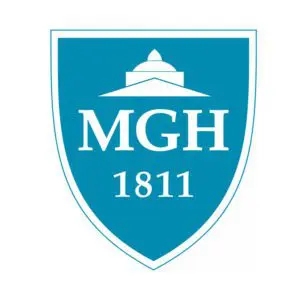
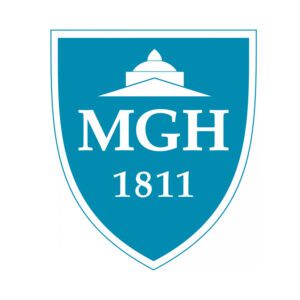
Timeframe: 2022 - 2025
Goals: Identifying how the DNAJ-PKAc/SIK/p300 program controls mitochondrial function and define how these abnormal mitochondria affect the metabolism of FLC cells
Principal Investigator: Nabeel M. Bardeesy, PhD
Study overview: Signals that control the growth and metabolism of cells often are relayed through a series of reactions in which proteins are sequentially modified with a chemical tag, a phosphate group. Each of the reactions in a cascade of phosphate-transfers is carried out by a specific “protein kinase,” the major class of signaling enzymes. In fibrolamellar carcinoma (FLC), an abnormal protein kinase (labeled DNAJ-PKAc) that results from FLC's DNAJB1-PKACA gene fusion drives the development and growth of tumor cells. The functions of that kinase remain incompletely understood. Another characteristic of FLC is the presence of exceptionally large numbers of abnormal mitochondria, organelles that play a key role in cellular energy generation and metabolism.
Past studies by Dr. Bardeesy revealed that DNAJ-PKAc inactivates three related protein kinases, the Salt-Inducible Kinases (SIKs). In turn, inactivation of the SIKs leads to the mitochondrial abnormalities in FLC. Additional data indicate that an important element of this signaling cascade is the activation of a protein called P300 histone acetyltransferase (abbreviated simply as P300). P300 exerts broad effects in controlling gene expression by modifying proteins in chromatin, the complex structure in which DNA is packaged and organized in living cells.
In this study, Bardeesy proposes to “explore precisely how the DNAJ-PKAc/SIK/P300 program controls mitochondrial function” and to define how the mitochondrial abnormalities associated with P300 activation contribute to cancerous growth in FLC. Most importantly, his preliminary data suggests that the mitochondrial abnormalities could potentially be exploited in a novel approach to therapy for this cancer. He proposes to further characterize the functional impact of aberrant mitochondria in tumor cells, and to test whether FLC is sensitive to drugs against P300 and drugs that target the altered mitochondria.
Successful completion of the study aims should have three key benefits:
- Improving our understanding of a key signaling pathway central to the metabolism, growth, and survival of FLC cancer cells
- Validating P300 as a therapeutic target for FLC and selection of a best-in-class inhibitor with potential to treat patients
- Defining the metabolic changes in FLC mitochondria that are likely to contribute to the cancer’s growth, survival, and resistance to therapy.
Timeframe: 2022 - 2024
Goal: Identify functional role of mitochondrial alterations in FLC and FLC-Like BAP1 HCC
Principal Investigator: Jessica Zucman-Rossi, MD, PhD
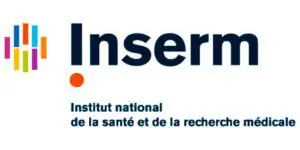
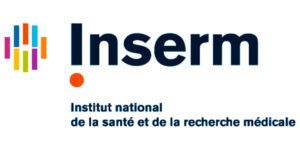
Study overview: Recently, important research studies have reported specific genomic abnormalities of tumor subtypes. One of these, representing the fusion between DNAJB1 and PRKACA genes, has been described to be typical of the classic fibrolamellar subgroup. Another subgroup of tumors harboring fibrolamellar-like features was recently identified by the Inserm lab and was characterized by inactivating mutations of BAP1 encoding the BRCA1 associated protein-1 (FLC-Like BAP1 HCC). Despite the fact that these two subtypes of tumors harbor particular tumor histology and specific major gene alterations, they also share common features including PKA activation and absence of liver disease. Potentially, other similarities could exist. Mitochondria, which are often referred to as the powerhouses of the cell, are critical for many cellular functions including energy production, metabolism or cell survival. They have their own DNA called mitochondrial DNA or mtDNA. It has been reported that mitochondria number abnomalities and mtDNA sequence and copy number alterations were found in some tumors including FLC. However, their biological and clinical significances in FLC malignancy is poorly understood.
In this study, the team aims to understand the mitochondria alterations in FLC and FLC-like BAP1 HCC at different levels. Thus, they will study both the nuclear and mitochondrial DNA alterations, the number and the distribution of mitochondria within the tumor, paying attention to the functional consequences of the abnormalities. The findings should provide new insights in mitochondria significance in FLC, prioritizing next steps toward the development of novel and effective therapeutics.
Timeframe: 2022 - 2023
Goal: Knock-out gene targets in a mouse model of FLC to identify potentially effective drug combinations for patients with advanced FLC
Principal Investigator: Sean Ronnekleiv-Kelly, MD

Study overview: This study will apply an innovative gene-editing based technology (genome-wide CRISPR knockout screen) on a mouse cellular model to screen all possible cancer targets (i.e., all genes) coupled with promising drugs to precisely identify the most lethal drug combinations in FLC. This knowledge will enable discovery of new and effective combined drug treatments for FLC that can overcome the cancer cell adaptive mechanism, and work cooperatively to maximize the tumor-killing effect.
The rationale is threefold. First, combination drug therapy is requisite for treatment resistant cancers like FLC, yet identifying optimal therapeutic combinations has been exceedingly difficult with existing methods. Second, genome-wide CRISPR screens knockout each of the ~20,600 protein coding genes in the genome (one gene per cancer cell) to identify specific genes associated with cancer cell lethality. Remarkably, this unique approach can couple each possible target (i.e. entire genome) with concurrent promising drug treatment (i.e. a core ‘backbone’ drug) to precisely reveal clinically relevant multi-drug therapy for FLC. Third, this innovative approach could identify and exploit the essential pathways by which the DNAJB1-PRKACA driver gene mutation promotes FLC aggressiveness and treatment resistance.
In future studies, any novel drug treatments identified will be tested in pre-clinical animal models meant to closely mimic human FLC, followed by evaluation in patients with this deadly cancer.
Timeframe: 2021 - 2024
Goals: Determine the molecular mechanisms of FLC and identify new pharmacological agents that could lead to effective therapeutics
Principal Investigator: Jin Zhang, PhD


Study overview: In recent studies, the investigation team discovered that the presence of the FLC oncogenic fusion protein disrupts a membraneless organelle. They showed that loss of this membraneless organelle in normal cells results in aberrant signaling as well as increased cell proliferation and transformation. Based on these data, they hypothesize that loss of this membraneless organelle induced by the oncogenic fusion leads to defects in cellular functions and drives tumor formation. The identification of pharmacological agents that recover this membraneless organelle in the presence of the oncogenic fusion protein, could provide useful leads for developing new therapeutics. In this research, the team will test these hypotheses by combining a variety of novel approaches, including live-cell biochemistry. They will undertake mechanistic studies in the established model systems and perform drug screens, in conjunction with additional collaborators with complementary expertise. The study should provide new insights into the cause of FLC and enable new therapeutic strategies to tackle this lethal cancer.
Timeframe: 2021 - 2023
Goal: Investigate the potential of heat shock protein 70 (Hsp70) and kinase inhibitors as potential therapeutic options in pre-clinical models
Principal Investigator: John Scott, PhD

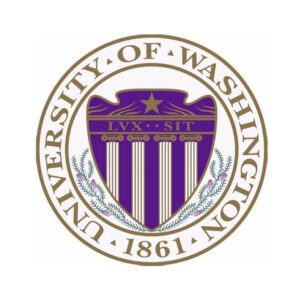



Study overview: In the previously funded work, the investigators discovered that DNAJ-PKAc forms a complex with heat shock protein 70 (Hsp70) and mitogenic kinases (kinase enzymes that function in the cell proliferation pathway) by acting as a scaffold. This feature creates a subcellular focal point for the transmission of aberrant chemical signals throughout FLC tumors and may be recruiting a host of other protein beyond what has been already reported. Pharmacological targeting of these oncogenic focal points was the next logical step in the continuum of this research. The goals of this study were:
- Determine if FLC is driven by the DNAJ-PKAc kinase activity or by association with oncogenic binding partners.
- Test efficacy of Hsp70/kinase inhibitor combinations in human FLC cells, organotypic tumor slices, hepatic organoids expressing the chimeric protein and PDX models.
Results: The investigators used a proximity assay to characterize the range of binding partners for DNAJ-PKAc ‘scaffold’ as compared to the native protein. Results showed that the fusion protein is promiscuous (binds to various partners) as compared to the native protein. Within these wide range of binding partners, they discovered increased association of Bcl2-associated athanogene 2 (Bag 2), with the fusion protein. Bag2 is a co-chaperone protein linked to Bcl-2, an anti-apoptotic factor (an inhibitor of programmed cell death which can contribute to the development of cancer), which was also observed at elevated levels in FLC patient samples. Treatment of hepatocyte cell lines overexpressing the DNAJ-PKAc fusion protein with drug combinations targeting this DNAJ-PKAc/Bag2 axis confirmed a chemoresistant function of Bag2, which could explain the increased levels of this protein seen in FLC samples. This observation opened up potential therapeutic targets.
Implications: This study provided a strong candidate for therapeutic target explorations. Bag2 interacts with Bcl-2, which is an anti-apoptotic protein. Several targeted therapies against Bcl-2 are used for treatment of a wide range of cancers. However, targeting Bcl-2 in FLC has not been successful, so possible combinations of therapies targeting Bcl2 and associated factors, such as Bag2 could be a good strategy for FLC.
Timeframe: 2020 - 2021
Goals: Document mechanisms driving FLC and test if treatment with inhibitors of β-catenin may be a potential therapeutic approach for FLC
Principal Investigator: Nikolai Timchenko, PhD


Study overview: In the course of studies of pediatric liver cancer, the team at CCHMC has identified chromosomal regions (Aggressive Liver Cancer Domains, ALCDs) in multiple liver cancer genes. Expression of the ALCD containing genes is increased in liver cancer. The project team has identified several regions within ALCDs that might be activated by transcription factors and chromatin remodeling proteins. One of these regions contains an ideal binding site for β-catenin-TCF4 complexes. Given recent reports showing that the mutant kinase DNAJB1-PKAc phosphorylates β-catenin, they hypothesized that DNAJB1-PKAc activates ALCD-containing cancer genes leading to FLC pathology. Preliminary studies of FLC patient tumor samples show that the DNAJB1-PKAc phosphorylates β-catenin at Ser675, leading to the formation of β-catenin-TCF4 complexes and that these complexes bind to the ALCDs. They also identified the ALCD-containing cancer genes that are specifically upregulated in patients with FLC.
Therefore, the main goal of this effort was to determine the role that the DNAJB1-PKAc-β-catenin-ALCD axis plays in the development of FLC. They:
- Examined if the DNAJB1-PKAc-β-catenin-TCF4 pathway activates known ALCD-dependent cancer genes in FLC patients
- Investigated new, FLC-specific ALCD-containing genes in FLC patients and determine mechanisms by which DNAJB1-PKAc-β-catenin pathway activates expression of these genes
- Examined if the inhibition of the DNAJB1-PKAc-β-catenin-TCF4 pathway by using the β-catenin inhibitor PRI-724 inhibits development of FLC in a mouse model of FLC.
The project aimed to provide critical knowledge of the mechanisms of FLC and test if treatments with inhibitors of β-catenin might be considered a potential therapeutic approach for FLC.
Key findings: The study team determined that DNAJB1-PKAc phosphorylates β-catenin at Ser675 leading to the formation of β-catenin -TCF4 complexes and that these complexes bind to the Aggressive Liver Cancer Domains (ALCDs) in many oncogenes. The study also found new, FLC-specific ALCD-containing genes in FLC patients, the majority of which code for fibrotic genes and oncogenes.
Additionally, this research showed that the inhibition of the DNAJB1-PKAc-β-catenin-TCF4 pathway by the β-catenin inhibitor PRI-724 inhibits proliferation of cancer cells and the development of FLC in an organoid model of FLC. Interestingly, they also obtained evidence that DNAJB1-PKAc β-catenin -TCF4 pathway is preserved in lung metastases of FLC patients.


The results of the study were published in Hepatology Communications in September 2022. The complete journal article can be accessed here: https://aasldpubs.onlinelibrary.wiley.com/doi/10.1002/hep4.2055.
Implications: The results of the project provided critical knowledge of the mechanisms of FLC, and suggest that the inhibition of β-catenin might be considered as a therapeutic approach to treat FLC patients.
Timeframe: 2020 - 2024
Goal: Investigate the impact on FLC growth and survival of inhibiting two specific oncogenes identified in previous works
Principal Investigator: Praveen Sethupathy, PhD
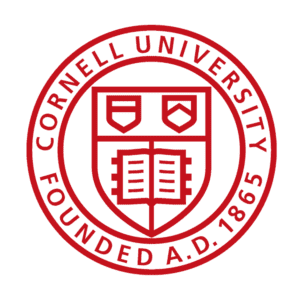



Study overview: Based on previous epigenomic, metabolomic, and microRNA profiling, as well as initial drug studies, the study team has developed two new exciting hypotheses about therapeutic vulnerabilities in FLC. First, they hypothesize that inhibition of two candidate FLC oncogenes, CA12 or SLC16A14, independently and/or in conjunction with FDA-approved drugs, will dramatically reduce FLC cell viability, proliferation, and invasive capacity. Second, they hypothesize that the increase in LDHB promotes glycolysis and FLC tumor cell survival, which can be reversed by miR-375 mimics. In this project, the team proposes to test these hypotheses in several different disease models of FLC. The findings from the proposed studies could potentially lay the foundation for completely novel, effective strategies for molecular therapy.
Timeframe: 2020 – 2023
Goal: Create a comprehensive list of potential drug targets for FLC
Principal Investigator: Jesse Boehm, PhD


Study overview: This project is part of the Broad Institute’s Rare Cancer Dependency Map Initiative. The project has three main goals to identify potential FLC therapeutics:
- Developing new cell models of FLC for the research community. Harnessing the Broad Institute’s Cancer Cell Line Factory laboratory and its combinatorial media screening technology will allow the team to systematically determine the conditions necessary to grow FLC samples as three-dimensional organoid models. They will also work in coordination with the FCF-sponsored Biobank to create a unified pipeline by which any patient can direct tissue to FLC researchers.
- Utilizing the developed cell culture models of FLC to create a comprehensive list of potential drug targets and to identify existing drugs that may have therapeutic potential against FLC.
- Empowering the entire FLC research community by sharing all developed genomically characterized and clinically annotated cell models and by making all the data and biologist-friendly analysis tools freely available online, pre-publication at DepMap.org.
If fully successful, this effort will nominate high priority targets for drug discovery as well as new drug repurposing hypotheses.
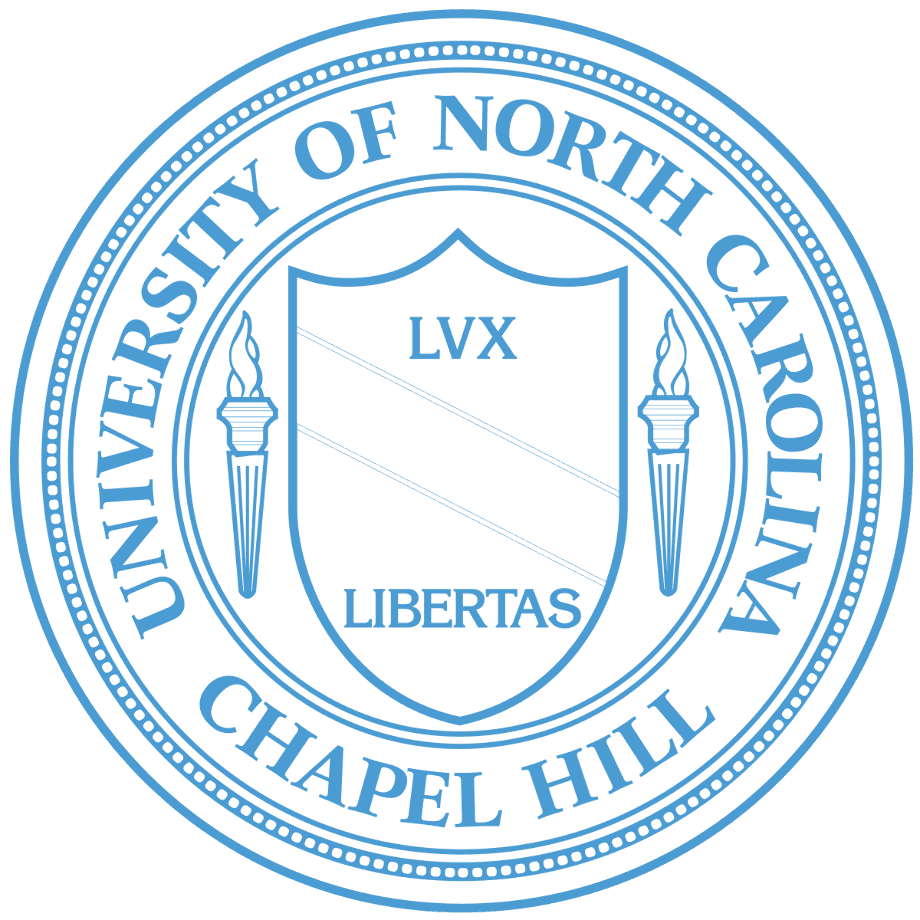



Timeframe: 2019 - 2020
Goal: Identify optimal culture conditions for FLC organoids
Principal Investigator: Jian Liu, PhD
Study overview: Scientific investigators often use cultures, dishes containing tumor cells, to test candidate treatments for a disease. The type of cultures that most accurately reflect the properties of cells as if they were inside the body are “organoids”, units with traits representative of the whole tissue. FLC organoids are aggregates of FLC tumor cells in a complex along with support cells (such as endothelia, cells associated with vasculature) that behave as a tiny unit of FLC tumor tissue.
In past research, specific defined conditions have permitted the stable formation and maintenance of FLC organoids, but these cultures grow slowly. This study proposed to evaluate novel conditions that hopefully would provide investigators with conditions promoting the development of multiple FLC models. Any complexes identified as biologically active will be made available to investigators elsewhere who will assess if the conditions elicit expansion of FLCs in other FLC model systems.
In this study, specific goals included:
- Aim 1: Identify and synthesize the chains of heparan sulfates, heparins, and/or chondroitin sulfates that bind by high affinity to growth factors (GF) that can drive the expansion of organoids of normal or malignant stem cells.
- Aim 2: Assess the biological effects of a soluble signal complexed with a glycosaminoglycan (GAG) chain (GF/GAG complex) on FLC organoids derived from a UNC-developed PDX tumor line of FLC. If successful, the GF/GAG complexes that are positive will be provided to other investigators to learn if the effects are replicated for other FLC models.
Results: The study found that ten distict heparan sulfate oligosaccharides elicited particular biological responses. Of note, complexes of paracrine signals (a type of cellular communication in which a cell produces a signal to induce changes in nearby cells) and 3-O sulfated HS-oligosaccharides slowed the growth of FLC organoids, and with Wnt3a, stopped the growth of the organoids for months.
Other reported findings included:
- FLC tumors are genetically related to biliary tree stem cell (BTSC) subpopulations, and not to mature hepatic or pancreatic cells
- Gene expression and cell biological phenomena indicate that FLCs are highly enriched for cancer stem cells.
- FLC tumor cells are very difficult to culture outside of the body because of the production by FLC of enzymes that degrade components of the conditions being used for their survival and expansion
- Regulation of FLC cells is dependent on paracrine signals from mesenchymal cell partners (stem cells that differentiate into all types of connective tissue).

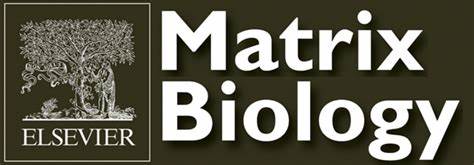
The results of this study were published in Matrix Biology in August 2023. The full text of the article, "Fibrolamellar carcinomas–growth arrested by paracrine signals complexed with synthesized 3-O sulfated heparan sulfate oligosaccharides" can be read here.
Implications: The study provided insight into the conditions required to grow and culture FLC tumor organoids. In addition, if future efforts are used to prepare HS-oligosaccharides resistant to breakdown in the body, paracrine signal—HS-oligosaccharide complexes could potential serve as therapeutic agents for clinical treatments of FLC.
Timeframe: 2019 - 2023
Goal: Investigate the potential of retinoic acid therapy
Principal Investigators: Andrew Yen, PhD and Praveen Sethupathy, PhD




Study overview: FLC is driven by the DNAJ-PKAc fusion protein. A potential therapeutic strategy would be to induce loss of this key driver protein. One approach to substantially alter gene expression in cancer cells is differentiation induction therapy, which causes malignant cells to acquire more mature, specialized characteristics and to stop proliferating. The most successful differentiation therapy agent in current use is retinoic acid (RA), which has been the standard of care for acute promyelocytic leukemia (APL). RA, a metabolite of Vitamin A, induces APL cells to convert from a proliferating malignant state resembling immature white blood cells to a non-transformed, arrested state resembling the corresponding normal, mature white blood cells. Preliminary observations in a model cell line engineered to stably express DNAJ-PKAc showed that RA causes loss of the fusion protein.
This suggests the possibility that retinoic acid could have therapeutic activity against FLC by causing loss of the transforming protein for this tumor, thereby relieving the hepatic cells of the tumor phenotype. The study exploited the observation in this experimental model and extended it to primary cultured FLC cells. The project goals were to:
- Determine if retinoic acid causes loss of the fusion protein in FLC cells, and
- Characterize the molecular signature and cellular attributes of the retinoic acid-induced FLC cell response.
If successful this effort will:
- Demonstrate that retinoic acid, a drug already approved and used in leukemia therapy, has an off-label application for FLC, and
- Identify candidates to target for more sophisticated combination therapy, an emerging therapeutic modality that is proving effective in retinoic acid based therapy against other tumors.
The basic rationale is that if a drug relieves the FLC cells of the tumor causing protein, then the tumor phenotype would be relieved.
Timeframe: 2019 - 2022
Goals: Investigate the potential of AURKA inhibitors for FLC treatment
Principal Investigators: John Gordan, MD, PhD (UCSF) and Nabeel Bardeesy, PhD (MGH)
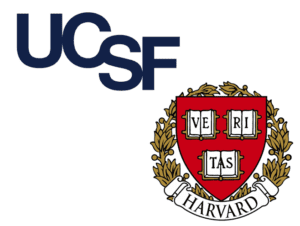
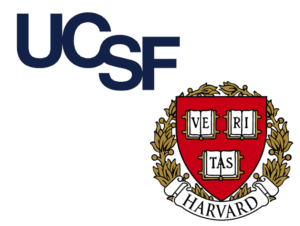
Study overview: Even though the DNAJB1-PRKACA gene fusion is sufficient to trigger fibrolamellar liver cancer (FLC), no treatments directed at this target are clinically available. Most FLC patients receive chemotherapy and no PKA inhibitors are currently in clinical use.
In previous work, the study team mapped the signaling cascade downstream of PRKACA in FLC and other tumors. This analysis highlighted Aurora Kinase A (AURKA) as a key mediator of oncogenic growth. AURKA is best known for regulating the cell cycle, but also promotes cell survival and the expression of oncogenic genes (i.e., those that contribute to cancerous growth). Most conventional AURKA inhibitors fail to strongly inhibit the growth of human FLC cells.
This finding is consistent with limited activity observed with such drugs in clinical trials. However, a new class of AURKA inhibitors have emerged that are designed to disrupt its interaction with the Myc family of oncoproteins, which are critical drivers of many cancers. The team believed that that AURKA-mediated stabilization of MYC is necessary to maintain growth of FLC cancer cells, and that one of these new AURKA inhibitors could potentially reduce the proliferation of FLC cells.
Although these new AURKA inhibitors are not yet ready for human use, this study aimed to understand if they are likely to be effective for FLC and whether they work well in combination with other available drugs. Their effort planned to assess the activity and mechanism of action of these AURKA inhibitors in FLC laboratory models, including human tumors grown in mice, with the goal of identifying a drug in this class that could be advanced to clinical testing in FLC patients.
Key Findings: The authors reported that the inhibitor of AURKA (alisertib) did not show any effect on Myc protein levels in FLX1, a patient-derived cell line of FLC. They also reported that the combination of alisertib with an inhibitor of Pim had a mild effect on reducing MYC levels (the Pim kinase acts along with Myc during the formation of a tumor). However, the combination had no effect on cell viability.
The authors then focused on identifying other mechanisms of regulation of MYC family of oncogenic factors to identify strategies to selectively target it. It was observed that PKA stimulation increases phosphorylation of a translation factor, eIF4A, thereby increasing its activity and causing rapid cell proliferation. This suggested that PKA effects on the initiation of transcription (via eIF4A) might be responsible for its induction of c-MYC expression and increased cell proliferation. Consistent with this, the inhibition of eIF4A with the natural product rocaglamide, or its clinically used derivative zotatifin (now being investigated in clinical trials for other cancers), significantly reduced c-MYC protein levels and potently inhibited proliferation of a fibrolamellar cell line (FLX1).


This work was completed in collaboration with another FCF grantee, John Scott of the University of Washington. An article summarizing the work was published by eLife in January 2023. The full text of the publication can be read here: https://prod--journal.elifesciences.org/articles/69521.
Implications: This study established a clearly defined mechanism of MYC regulation by PKA. It also identified compounds currently in clinical trials that can selectively disrupt this mechanism of MYC activation. In the next steps for this investigation, these compounds will be tested in patient-derived organoid models.
Timeframe: 2019 - 2021
Goal: Investigate the potential of heat shock protein 70 (Hsp70) and mitogen-activated protein kinases (MAPKs) as therapeutic options for FLC
Principal Investigator: John Scott, PhD





Study overview: A main goal of this project was to determine how the abnormal form of protein kinase A (PKA) present in fibrolamellar carcinoma (FLC) cells differs in its biochemical function from normal PKA, and to determine if the differences can be exploited to find drugs to treat FLC.
The driver of fibrolamellar carcinoma (FLC), specified by the DNAJB1-PKACA fusion gene, is a fusion protein (“chimera”) in which most of the biochemically active catalytic subunit of PKA (designated PKAc, or simply C), is linked to a domain of a “heat shock protein 40” (HSP40) coded for by a segment of the gene DNAJB1. The chimera can be designated the DNAJB1-PKACA protein, or more simply, DNAJ-PKAc.
Protein kinases are enzymes that attach phosphate groups to specific sets of protein substrates in the cell. In turn, this phosphorylation by a kinase influences the substrates by turning on or off their activity and/or by changing their location within the cell.
This project aimed to determine how attaching a piece of the DNAJB1-encoded HSP40 to PKAc contributes to the ability of the DNAJ-PKAc fusion protein to serve as the driver of fibrolamellar carcinoma (FLC). One possibility was that the fusion protein would be fully active as a kinase even in the absence of cAMP. However, John Scott’s lab previously had found that DNAJ-PKAc is regulated similarly to normal PKAc by the R subunit, and still requires cAMP to be activated.
Given the underlying biochemical similarities between the PKAc and DNAJ-PKAc kinases, the Scott lab explored other ways in which they differ that could explain the cancer-driving property of the chimera, and might also suggest new therapeutic strategies. They asked broadly whether the normal and oncogenic forms of the protein differ substantially in their interaction with other proteins in the cell, their localization within the cell, and/or the sets of proteins they phosphorylate.
The HSP40 (DNAJ) domain of the FLC-associated chimera is well-known to bind and “recruit” to protein complexes another heat-shock protein, HSP70. The HSPs play important roles in biology by assisting in the folding of proteins into their correct three-dimensional shapes, preventing or correcting misfolding of proteins, and helping to eliminate badly misfolded or aggregated proteins that can damage cells. Cells in stressed environments, or which are challenged to grow in a deregulated manner as in cancer, often require elevated levels of certain HSPs, including HSP70. Indeed, high expression of HSP70 is a frequent feature of cancer cells, and the protein contributes to tumor survival and growth in multiple ways.
The goals of the study were:
- Establish if the unique combination of DNAJ-PKAc-interacting proteins stabilize the signaling islands and lead to the FLC pathology.
- Test drug combinations that target the DNAJ-PKAc interacting proteins.
Results: In the funded project, the Scott lab confirmed their hypothesis that DNAJ-PKAc serves as a scaffold for a protein complex that includes HSP70. They utilized biochemical, cell biology, and visual imaging methods to document the presence of DNAJ-PKAc/HSP70 complexes in a model cell system (cultured mouse cells, similar to normal liver cells, in which the DNAJB1-PRKACA fusion was introduced by genetic engineering) and found that these complexes also are prevalent in FLC cells in human tumor biopsies. In the model system they further demonstrated that inducing an artificial dimer of normal HSP70 and PKAc inside cells mimicked DNAJ-PKAc in activating a proliferation-associated protein kinase (named ERK) that is known to be up-regulated in FLC tumor cells.
Additionally, the team found that AKAP-Lbc, in particular, is up-regulated in FLC tumors and that it sequesters DNAJ-PKAc/HSP70 sub-complexes and most likely forms a focal point for signaling. They suggest that this brings the oncogenic PKA and HSP70 into association with several protein kinases that are associated with active cell division.
Finally, the team demonstrated that the proliferation in culture of their model mouse liver cell line containing DNAJ-PKAc could be blocked by a combination of two drugs, Ver155008, an inhibitor of HSP70, and Cobimetinib, an inhibitor of MEK, one of the “mitogenic” protein kinases in the AKAP-Lb-associated complex. However, the efficacy of the same drug combination against human FLC cells grown in mice was not determined. (Such experiments were not feasible at the investigators’ institution during the COVID pandemic.)
Implications: This study provided proof of concept that proteins binding to DNAJ-PKAc or activated by the fusion protein can be targeted instead of the fusion protein itself. The fusion protein is difficult to target by existing protein kinase inhibitors due to structural similarity with the native PKAc. Therefore, these results offer an alternative method of targeting the pathways activated by DNAJ-PKAc.
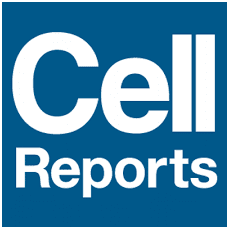
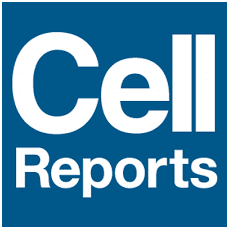
Elements of the team's work was published and acknowledged in an article appearing in Cell Reports in April 2020. The full text of that publication can be read here.
The preceding efforts of the team defining the scaffolding function of the PNAJ-PKAc fusion were published in the journal eLife. Click here to access that article.
Timeframe: 2017 - 2020
Goal: Investigate the role of microRNAs and long non-coding RNAs in fibrolamellar carcinoma and evaluate RNA-based therapeutics
Principal Investigator: Praveen Sethupathy, PhD




Study overview: This study aimed to leverage genome-scale approaches to discover the molecular factors most critical to FLC tumor formation, metastasis, and drug resistance. MicroRNAs and long non-coding RNAs are RNA species that do not contain instructions for protein formation yet are vital to numerous biological processes including tumor formation.
Specific study efforts included:
- Identifying microRNAs and long non-coding RNAs that facilitate FLC tumor formation/invasion
- Evaluating the potential of RNA-based therapeutics to inhibit their activity
- Integration of these results with multiple large-scale genomic and metabolomic datasets to identify critical druggable pathways.
Key Findings: This investigation identified miR-375 as the most dysregulated miRNA in primary FLC tumors based on an analysis of the small RNA sequencing data from The Cancer Genome Atlas. It also demonstrated that miR-375 expression was decreased significantly in a FLC patient-derived xenograft model compared to 4 different cell populations of the liver. In addition, it showed that the introduction of DNAJB1-PRKACA in mice (by clustered regularly interspaced short palindromic repeats/CRISPR-associated protein 9 engineering and transposon-mediated somatic gene transfer) was sufficient to induce significant loss of miR-375 expression. Furthermore, the study found that overexpression of miR-375 in FLC cells inhibited several well characterized growth regulatory pathways and suppressed cell proliferation and migration.
These results suggest that miR-375 could be a good candidate for therapeutic investigations. The study team also identified miR-10b, another aberrantly elevated pro-proliferation miRNA in FLC, which is responsive to DNAJB1-PRKACA over-expression, but only in human cell models (HepG2, HEK293 cell lines) and not in mouse models (AML-12 cell line, TIB-75 cell lines), thus highlighting the importance of using human cell lines for FLC studies. Inhibition of miR-10b led to reduced proliferation in human cell lines, however the effect was modest. The team concluded that miR10-b may be a good candidate for some type of combination therapy.


Results of this study were published by Cellular and Molecular Gastroenterology and Hepatology in February 2019 and the Journal of Clinical Investigation in April 2022. The full texts of each of those articles can be accessed via the following links:
- https://www.cmghjournal.org/article/S2352-345X(19)30010-4/fulltext
- https://insight.jci.org/articles/view/154743
An article in the Cornell Chronicle available here further describes the February 2019 publication.
Implications: The study's findings open a potentially new molecular therapeutic approach to FLC. Further studies are necessary to determine whether miR-375 has additional important targets in FLC and exactly how DNAJB1-PRKACA suppresses miR-375 expression.
Timeframe: 2017 - 2019
Goal: Understand growth mechanisms and identify potential therapeutic targets
Principal Investigator: Raymond Yeung, MD, Professor of Surgery





Study overview: Fibrolamellar cancer (FLC) is one of the most lethal form of liver cancer in adolescents and young adults. Currently, there is no effective therapy for these patients besides surgery. Armed with a novel set of immortalized cell lines developed at the University of Washington that bear the characteristic FLC mutation (the DNAJB1-PRKACA gene fusion), this study sought to advance the understanding of the mechanisms that drive FLC development by:
- Identifying protein kinase pathways that are activated downstream of the DNAJB1-PRKACA gene fusion using a combination of global and targeted phosphoproteomic analyses.
- Functionally validating these results using FLC cell lines as well as human FLC samples.
- Investigating the role of HSPs in FLC, including their pro-survival function in keeping cells alive during stress, based on preliminary observations that the mutant protein associates with heat shock protein (HSP) 70.
Together, these studies aimed to unveil mechanistic insights and new therapeutic targets that will accelerate a cure for this deadly disease.
Key findings: The study team identified approximately10 kinases that affected the proliferation of FLC-expressing cells. In this study, researchers also found that DNAJ-PKAc acts like a scaffold, bringing together other proteins that contribute to the development of the cancer. They established that the fusion protein, DNAJ-PKAc is stabilized by its association with A-kinase anchoring proteins and the chaperon protein Hsp70. It also interacts with a kinase module known as RAF-MEK-ERK. This leads to the activation ERK signaling pathways, which in turn activates other downstream kinases which culminate in increased cell proliferation.


Drug combinations that inhibit Hsp70 and MEK (from the RAF-MEK-ERK module) led to the reduced proliferation of cells expression the DNAJ-PKAc protein. As a next step, these results were being tested in patient-derived cell lines and mouse models of FLC.
In May 2019, the key results of this study were published in the journal eLife. The full text of the published article, "An acquired scaffolding function of the DNAJ-PKAc fusion contributes to oncogenic signaling in fibrolamellar carcinoma", can be read here.
Implications: These results established the importance of interaction between mutant fusion kinase and scaffolding proteins and chaperones. Through such functional cross-talk, DNAJ-PKAc most likely affects many signaling pathways in specific cellular subdomains to promote oncogenesis. This study provided a functional model of the fusion protein and effect on kinases.
The study also suggested that a combination of Hsp70 and MEK inhibition may offer a potential combination therapy for FLC. However, that utility is not clear and should be tested in other model systems in addition to the engineered AML-12 system used in this study.
Timeframe: 2017 - 2019
Goal: Evaluate the role of Hedgehog and YAP signaling in fibrolamellar carcinoma
Principal Investigators: Cynthia Guy, MD and Anna Mae Diehl, MD


Fibrolamellar carcinoma has a unique histological appearance consisting of large tumor cells surrounded by thick fibrous bands, the stroma. Molecular crosstalk between tumor and stroma is important in tumor maintenance and progression. Decoding the important signals in these interactions will reveal new potential therapeutic targets.
This effort aimed to study the role of Hedgehog (Hh) signaling in tumor-stromal interactions. Hh signaling is important in normal liver development and regeneration as well as tumor-stromal interactions in other cancers. Active Hh signaling also activates a protein called Yap, which results in stroma accumulation and primitive stem cells, both of which are seen in FLC. The study examined the role of Hh and Yap signaling in tumor-stroma interactions and their effect on tumor growth and progression.
Key Findings: This study generated a FLC xenograft model in mice by injecting human FLC cells into immunodeficient mice. After confirming that the tumor exhibited typical features of the primary human FLC, the tumor was disaggregated and the resulting cell suspension was examined for functional characteristics of stem-like cells (e.g., anchorage independent growth capacity) and subjected to single cell RNA sequencing (SC RNA seq) to characterize the various communities of cells in the tumor.
In the study, data from SC RNA seq showed a decrease in miR 375 (which was reported by the Sethupathy lab as the most downregulated microRNA in human FLC) and increased levels of YAP1. This was significant because miR375 inhibits YAP1 and PKA is known to suppress miR375. Overexpressing miR 375 in a FLC cell line reduced YAP1 activity and suppressed FLC growth and migratory capacity in culture. Additionally, treatment with a Yap1 inhibitor inhibited Yap target gene expression in the xenograft and changed the histologic features of the cancer. It reduced the stroma and caused the cancer cells to appear more like mature hepatocytes.
Further analysis of SC RNA- Seq data showed transcriptionally distinct cluster of cells, with one of them showing a significant enrichment with mesenchymal genes, including multiple types of collagen and other matrix molecules as well as expression of Yap and Igfsbp3 (insulin like growth factor-2 RNA binding protein-3). Igf2bp3 is a known marker of various tumor initiating stem-like cells (TISCs), including TISCS for hepatocellular carcinoma and cholangiocarcinoma.
These results suggest that the malignant human FLC cells promoted accumulation of nonmalignant mouse cells with TISC-like characteristics, including expression of autocrine/paracrine reprogramming factors (e.g., Yap). The concept that nonmalignant mouse cells in the removed tumor might have been “reprogrammed” was supported by analysis of other mouse cell clusters which showed expression of markers associated with malignant FLC cells.


Results of this investigation were included in an article published by the American Journal of Pathology in January 2020. The full text of that article can be read here: https://ajp.amjpathol.org/article/S0002-9440(19)30770-9/fulltext
Implications: This work provided insight into the pathogenesis of FLC, specifically the induction of epithelial cells to transition towards a more fibrogenic, mesenchymal, and stem-like state, while limiting mesenchymal cells from acquiring less fibrogenic and more epithelial characteristics. Understanding these pathways would be beneficial to better understanding the drivers of metastasis in FLC.
Timeframe: 2017 - 2018
Goal: Characterize inhibition of the DnaJ-PKAc chimeric protein in fibrolamellar carcinoma
Principal Investigator: Hibba tul Rehman, MD


Study overview: The DNAJB1-PRKACA fusion gene produces the DNAJ-PKAc fusion kinase protein, which is present in nearly all FLC tumors and promotes liver tumor formation in mice. Kinases, including fusion kinases, have been successful drug targets in numerous cancer types. Inhibition of DnaJ-PKAc may provide a targeted therapy for FLC. This study proposed a two pronged approach towards identifying therapeutic inhibitors of the fusion:
- Screening a previously developed peptide library to identify peptides that preferentially bind chimeric DnaJ-PKAc over normal, wide-type protein in vitro.
- Developing a library of inhibitory peptides that would preferentially inhibit DnaJ-PKAc.
The aim of these efforts was to develop an understanding that will support the development of inhibitors that regulate the function of the chimeric kinase without affecting the wild-type kinase, thus selectively targeting cancer cells without affecting healthy tissue.
Key Findings: The study analyzed a library of small inhibitor peptides derived from endogenous PKI (which inhibit wild-type PKA in the body), which showed no preferential competitive inhibition of wild-type PKA versus DnaJ-PKAc. This result was due to the overwhelming structural similarities observed at the active sites of wtPKA and DnaJ-PKAc. A survey of publicly-available data sets to determine the predominant isoform(s) of PKI expressed in normal liver and FLC tumors showed that PKIβ was likely to be the predominant isoform expressed in human liver. Upon testing of the inhibitory properties of full-length PKIβ, identical inhibition of both wtPKAc and DnaJ-PKAc was observed.


Details of the analysis was published in April 2019 in The Journal of Cellular Biochemistry. The full article can be read or downloaded here.
Implications: This study showed the importance of adopting a targeted approach to inhibiting DNAJ-PKAc in FLC.
Timeframe: 2016 - 2019
Goal: Understand growth mechanisms and identify potential therapeutic targets
Principal Investigators: John Gordan, MD, PhD (UCSF) and Nabeel Bardeesy, PhD (Mass General Hospital)

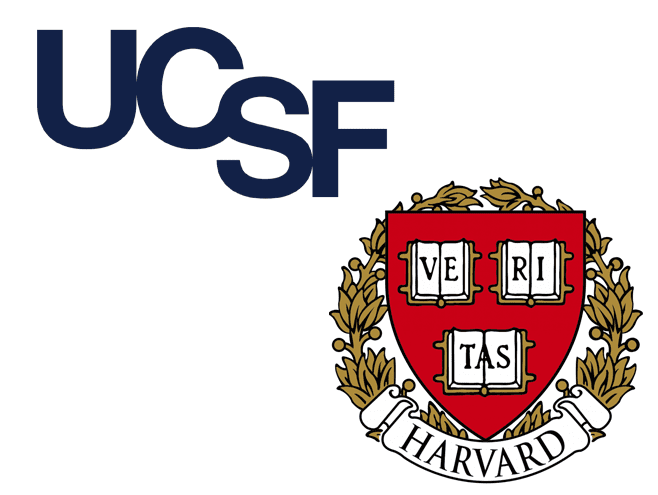
Study overview: The discovery of a genetic change in the protein kinase A (PKA) gene in nearly all cases of fibrolamellar liver cancer (FLC) creates hope that targeted therapy against PKA will have potent effects for FLC patients. However, progress has been limited due to the relative scarcity of established model systems and the current lack of an effective anti-PKA drug. PKA is a component of the G protein-coupled receptor (GPCR) pathway, which is thought to play a role in many other cancer types. However, little is known about how this pathway makes tumors grow, and if it creates any specific liabilities in tumor cells that can be effectively targeted even when PKA is still active. The study team hypothesized that common mechanisms support the growth of different cancers where PKA is abnormally activated and that deciphering these mechanisms would lead to new treatment strategies for FLC.
This study applied cutting-edge proteomic methods to comprehensively map biochemical processes controlled by GPCRs and PKA across a number of cancer cell lines. These efforts were complemented with genetic approaches to identify other genes essential for PKA-driven cancer growth. Finally, newly developed FLC models were used to test key targets identified with our screening techniques. By identifying and rigorously testing the importance of the mediators of PKA signaling in FLC, the study hoped to lay groundwork for the repurposing of existing drugs to accelerate progress in the treatment of patients with FLC.
Results: To understand PKA’s oncogenic mechanism and identify its downstream targets, the investigators generated genetic cell models with doxycycline-inducible PRKACA or its dominant negative counterpart, a mutant form of the PRKAR1A regulatory subunit. These cell models were then subjected to mass spectrometry for kinome profiling in order to detect kinases with significant altered activity following PKA modulation. This was integrated with small molecule inhibition and siRNA knockdown to identify PKA-regulated kinases that modify cell proliferation. This analysis revealed activation of the aurora-family kinase AURKA, with preferential sensitivity to the confirmation-disrupting AURKA inhibitor (CD-AURKAi) CD532 compared to other AURKA inhibitors.
Further experiments showed that the level of both c-MYC and n-MYC, known to be stabilized by AURKA, were both inhibited by CD532 in the FLC cell line. However, the reduction in proliferation in FLX1 by either c-MYC or n-MYC siRNAs treatment was not as much as the DNAJB1 siRNA treatment, suggesting that both c-MYC and n-MYC must be targeted together. Or more likely, there are other factors contributing to cell proliferation still to be uncovered.
Implications: The results from this study revealed a key molecular target, Aurora kinase A, that could be inhibited by pharmaceutical agents in combination with other therapeutic agents.
Research efforts continued under a follow-on grant from FCF.
Timeframe: 2016 - 2017
Goal: Develop new therapeutics for FLC
Principal Investigator: Sandy Simon, PhD
Investigator Collaboration: Barbara Lyons, PhD (New Mexico State University)




Study overview: The goal of this work was to identify potential therapeutic strategies to target FLC. The team identified three independent approaches to analyze based on their laboratory’s work showing that a single common DNA alteration is found in all fibrolamellar tumors leading to the DNAJB1-PRKACA fusion, and that this chimera is sufficient to cause fibrolamellar. The three sub-projects covered included:
- A high-throughput screen for molecules that directly block the chimera
- A screen to identify molecules that are directly phosphorylated by the chimera.
- An analysis of the structural dynamics of the chimera using a molecular dynamics simulation to identify sites on the chimera that would be appropriate for targeting therapeutics.
Key Findings: The study team purified the native and the chimera protein and observed the same level of kinase activity for both the proteins, which indicates that pan-kinase inhibitors may not work for FLC. Subsequently, they screened a library of approved bioactive compounds and identified a small molecule with some efficacy against the disease.
During the funding period, most progress was made against the third sub-project - characterizing the molecular dynamics of the chimera. Using molecular dynamics simulations and NMR, they found an ensemble of conformations of native and chimeric kinase. Because the conserved core of the wild-type enzyme and the chimeric fusion show little structural differences and the canonical function is not affected by the J-domain appendix, the presence of alternate conformations may create a way to target the chimera selectively. This opens up the possibility to develop novel small molecule inhibitors directed at the region of the fusion.



Results of the conformational analysis were published in Nature's Scientific Reports, in January 2018. The text of that article - "Conformational Landscape of the PRKACA-DNAJB1 Chimeric Kinase, the Driver for Fibrolamellar Hepatocellular Carcinoma" - can be read here.
Timeframe: 2016 - 2018
Goal: Investigate DNAJB1-PRKACA fusion kinase function in new fibrolamellar carcinoma models
Principal Investigator: Dr. Yi Guo, PhD

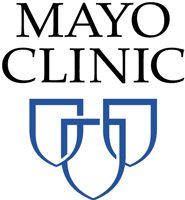
Study overview: The DNAJB1-PRKACA fusion kinase is found in nearly 100% of FLC cases. While this novel fusion had previously been shown to promote tumors in mice, defining the mechanistic function of DNAJB1-PRKACA and the pathways it controls is critical for the development of targeted therapeutics. This project investigated the function of the DNAJB1-PRKACA fusion in FLC tumor formation using both Drosophila melanogaster (fruit fly) and mice models. The team had previously established a DNAJB1-PRKACA transgenic Drosophila model, in which the fusion is expressed in the eye where phenotypes are easily visible. This model demonstrates abnormal phenotypes affecting both proliferation and differentiation of Drosophila eyes. The study team also exploited CRISPR/Cas9 genome-engineering technology in murine cultured hepatocytes to recreate the chromosomal deletion found in FLC patients.
The goals of the study were to:
- Characterize the oncogenic and fibrogenic activities of genetic engineered murine hepatocytes in vitro and in vivo; and
- Screen potential therapeutics using the DNAJB1-PRKACA over-expression model in Drosophila, to provide essential resources and knowledge for future development of new FLC therapeutics.
Key Findings: In this study, the researchers used CRISPR to generate chromosomal deletions corresponding to the FLC fusion protein in mouse hepatocytes, thereby creating mDNAJB1-PRKACA clones. These hepatocyte cell lines carrying the fusion proteins showed increased levels of intracellular PKA activity (phosphoPKA substrates) and grew faster than control cells plated at the identical density. These clones were then injected into mice liver and assessed for tumor formation. While the "normal" control did not have any tumor growth after 4 months, the engineered mDNAJB1-PRKACA-bearing mice showed entirely tumorous liver, as well as severe ascites. This mice model is being assessed for mechanistic studies of FLC.
In the second part of the study, the investigators developed a FLC model using the common fruitfly, Drosophila melanogaster. The DNAJB1-PRKACA fusion protein from humans was over-expressed in the fly eye and caused a visible transformation (small size and rough eye surface) of the fly eye. This transformation from hDNAJB1-PRKACA over-expression is caused by aberrant PKA signaling which interferes with cell proliferation and differentiation. Genetic inhibition by simply feeding the flies hPKI (a human inhibitory peptide for PKA) reversed the hDNAJB1-PRKACA over-expression eye phenotype. However, testing with a commercially available inhibitor caused toxic side effects and that molecule had to be discontinued as a potential therapeutic candidate.
Implications: These studies show the utility of fly eye morphology change as an easy, fast, and functional relevant in vivo readout for hDNAJB1-PRKACA-dependent developmental perturbations. This model is being subsequently used for the screening of several FDA-approved small molecule kinase inhibitors.




Timeframe: 2015 - 2017
Goal: Validating the RNA signature, expression and function in FLC
Principal Investigator: Praveen Sethupathy, PhD
Study overview: In past work at UNC, a survey of numerous drugs under consideration for FLC use proved non-effective or minimally effective in limiting the growth of the first FLC tumor model. This indicated that completely new strategies are likely to be required to identify effective future therapies for FLC. Consequently, the team sought to define the unique molecular landscape of FLC by analyzing the Cancer Genome Atlas (TCGA) database, a large and growing repository of diverse kinds of data on tumor and matched normal samples across different tumor types. In that data, they identified five genes (PCSK1, CA12, NOVA1, SLC16A14, and TNRC6C), the DNAJB1- PRKACA fusion transcript, and microRNA-10b as the most compelling tissue biomarkers and candidate drivers of FLC tumor progression.
Building on that initial work, this study was focused on:
- validating the RNA signature of FLC In an independent set of FLC, HCC, and CCA samples;
- evaluating the expression and function of these RNAs in a UNC-created FLC model; and
- identifying candidate therapeutic targets of FLC for future clinical development.
Results: This study made substantive progress on several fronts, including:
- Identification of a unique gene (n=16) and ncRNA (n=4) signature of FLC. The key findings of the study were four- fold:
- The team identified FLC samples within TCGA that were mis-annotated as HCC. Since FLC is a rare liver cancer, each novel cohort provides additional samples for genomic analyses.
- They compared the expression profile of FLCs with that of ~25 different tumor types within TCGA, the first such pan-cancer comparative analysis to be performed in FLC.
- The study showed that long, intergenic non-coding RNAs (lincRNAs) could stratify FLCs from other liver cancers. They identified four lincRNAs that are uniquely elevated in FLC tumors compared to other liver and non-liver cancers.
- The effort demonstrated that expression of CA12 correlates with tumor metastasis, consistent with previously known functions of CA12. This was validated via immunohistochemistry staining in over twenty patient samples.
- Functional studies of candidate FLC oncogenes in tumor spheroids. DNAJB1- PRKACA, as well as each of the 20 genes and lincRNAs that were identified as comprising the FLC signature (see above), represent compelling candidates for functional studies. Of those, the team selected three molecules, DNAJB1-PRKACA, CA12, LINC00313, to evaluate as regulators of FLC tumor phenotypes using a newly developed and characterized patient-derived xenograft (PDX) model. The team planned continued work on the design and implementation of functional studies to determine whether LINC00313, CA12, and/or DNAJB1-PRKACA loss-of-function influences cellular apoptosis/survival, proliferation, invasive potential, and/or expression of FLC cancer stem cell markers.
- Characterization of FLC exosome small RNA profiles. It has recently been reported that small RNAs, such as microRNAs, in exosomes secreted by tumor cells may be involved in driving tumor development and/or metastasis. The team isolated exosomes from the media of FLC spheroid culture and were able to detect RNA content for small RNA sequencing and analysis.



These results were published in Nature's Scientific Reports in March 2017 in an article entitled "Comprehensive analysis of The Cancer Genome Atlas reveals a unique gene and non-coding RNA signature of fibrolamellar carcinoma". The full text of that article can be read here.
Implications: This effort made substantial progress on their goals to characterize a unique molecular signature of FLC and to begin functional evaluation of potential FLC oncogenes using a recently established PDX model. In follow-on work, they planned to focus on continuing the functional studies using asLNAs, as well as on the characterization of FLC exosomal content, with an emphasis on microRNAs.
Note: Information about the PDX model referred to above was published in Nature Communications in their October 2015 publication. The full text of that paper can be read here.
Timeframe: 2014 - 2015
Goal: Investigate the potential of radioactive iodine as a therapeutic in FLC
Principle Investigator: Nancy Carrasco, MD (Currently at Vanderbilt University)


Study background: FLC cells express high levels of the iodine transporter NIS, raising the possibility that radioactive iodine may be a potential therapeutic for FLC. Radioactive iodine has a long and effective history as a treatment for thyroid cancer, which effectively takes in iodine. This study investigated whether FLC cells readily uptake iodine and if radioactive iodine may serve as an effective therapeutic for FLC patients.
Results and implications: The use of radioactive iodine on several patients did not confirm this theory and the project was terminated.
Timeframe: 2014 - 2015
Goal: Support series of high priority FLC investigations
Principal Investigator: Sandy Simon, PhD




Study background: In previous work (including the initiatives funded in 2010 and 2011), the study team identified an increase of a patient’s antibodies, in particular the antibody known as IgG (immunoglobin G), in fibrolamellar, sarcomas, and a number of other tumor types.
This 2013 funding agreement was originally meant to expand the previous work in three directions:
- Further develop and refine of the analysis of the accumulation of antibodies in human tumors.
- Develop nanoprobes that improve whole animal imaging while reducing background non-specific signals in the liver, including synthesizing new constructs, and testing them in liver slices and mice.
- Determine if FLC antibodies purified from a patient’s own blood could target their own tumors.
Funding reallocation: Instead, based on the results of the genomic initiative, the funding provided from this grant was diverted to follow up and further elaborate on the chimeric fusion discovery, with the goal of supporting the eventual development of effective diagnostics and therapeutics based on that insight.
Results: The bulk of the FCF funding provided in this grant was used to characterize all other changes in the DNA, the RNA (transcriptome) and the proteins (proteome) in FLC tumors.
The whole genome work, based on the analysis of tumors from 10 FLC patients, determined that the only consistent mutation (seen in all tumors analyzed) was the DNAJB1-PRKACA fusion. There were few other recurrent mutations. Other mutated genes that were found in more than one patient included MUC4, GOLGA6L2, DSPP, FOXO6 and HLA-DRB1. MUC4 was the most common additional alteration, found. It was altered in four patients and has been implicated in several other types of epithelial cancers. The study concluded that FLC has a very low tumor mutational burden in comparison to other adult and pediatric cancers. It has a relatively stable genome, with a single recurrent deletion found in all patients studied, and few additional mutations. Since the only consistent mutation found was the DNAJB1-PRKACA fusion, it concluded that it is unlikely that a "second hit" or other mutations are required for tumorigenesis.


This genomic sequencing work was published in the journal Oncotarget in December 2014. The full text of that article can be accessed here.
The transcriptome work demonstrated that the DNAJB1-PRKACA fusion results in many changes in the expression of different genes. Changes in the expression of genes in FLC tumors (compared to adjacent normal tissue) were detected for over 3,500 genes. Although some expression changes were similar to those in HCC, many were distinct, suggesting that FLC is a unique disease rather than a variant of HCC. It also demonstrated that the transcriptome of any FLC tumor is more like that of another patient's FLC tumor than it is of the adjacent tissue in the same patient. This strongly demonstrates that FLC is a single disease. In addition, the FLC tissue showed increased expression of oncogenes associated with various cancers including pathways found in breast cancer: ErbB2 (EGF pathway), Aurora Kinase A (AURKA) and E2F3 (cell cycle), and CYP19A1 (estrogen synthesis pathway). These dysregulated genes could potentially serve as targets for treatment of the disease.


The transcriptome work was published in October 2015 in the Proceedings of the National Academy of Sciences (PNAS), a peer reviewed journal of the National Academy of Sciences (NAS). That article - "Transcriptomic characterization of fibrolamellar hepatocellular carcinoma" - can be read here.
Implications: The key insights from this research include:
- FLC is not a genetically inherited disease. The chimeric alternation was found in the tumor but not in the adjacent tissue. It is the result of a one-time "glitch" in a patient’s DNA.
- Fibrolamellar is a single disease, not a collection of different diseases. The patterns of expression of genes in FLC tumors are consistent from patient to patient.
- FLC is distinct from HCC, a finding that should be considered in planning treatment approaches.
- FLC tumors over express several oncogenes (genes that have the potential to cause cancer) already associated with other cancers, which could lead to the identification of new targets for treatment.
In addition, the identification of the role of the Aurora Kinase A pathway in FLC by this study provided justification for a FLC-specific clinical trial of ENMD-2076, a small-molecule inhibitor of Aurora and angiogenic kinases. That multi-center trial, sponsored by CASI Pharmaceuticals with the support of Ghassan Abou-Alfa, MD of MSKCC and other investigators, was conducted from 2016 to 2018. Unfortunately, while ENMD‐2076 showed a favorable toxicity profile in FLC patients, the clinical trial results did not support further evaluation of ENMD‐2076 as single agent to treat FLC. The full results of that study were reported in The Oncologist in 2020.
Timeframe: 2013 - 2016
Goal: Conduct genomic-based analysis of FLC patients
Principal Investigator: Ron DeMatteo, MD


Study background and overview: At the time of this effort, little was known about the exact mutations driving fibrolamellar carcinoma. Published research on the genomic alterations in FLC was scarce and limited to small studies, with the largest comprised of just 11 patients.
Without this knowledge, clinicians were unable to design or apply targeted therapies to FLC. As a major referral center for liver cancer patients, Memorial Sloan-Kettering had a unique position to study FLC. The study team proposed to conduct a genomic-based analysis in the largest cohort of FLC patients to date, using tissue samples from approximately 40 FLC patients who underwent resection surgery for primary or metastatic fibrolamellar cancer. Their goal was to identify the causes and drivers of FLC - laying the groundwork for development of novel and more effective treatments.
Key findings: The study analyzed 38 specimens from 26 patients by array comparative genomic hybridiziation (aCGH) and 35 specimens from 15 patients by transcriptome sequencing (RNA-seq). All the tumor specimens examined exhibited genomic instability, with a higher frequency of genomic amplifications or deletions in the metastatic tumors. They observed the DNAJB1-PRKACA fusion transcript in 26 of 26 tumor specimens from 15 FL-HCC patients, further strengthening the belief that the DNAJB1-PRKACA fusion plays a key role in tumorigenesis.
The regions encoding 71 microRNAs (miRs) were deleted in at least 25% of tumor specimens. Five of these recurrently deleted miRs targeted the insulin-like growth factor 2 mRNA-binding protein 1 (IGF2BP1) gene product, and a correlating 100-fold upregulation of IGF2BP1 mRNA was seen in tumor specimens. Analysis of the transcriptome demonstrated a high degree of similarity in all tumors from the same patients, independent of the recurrence site or time. The p53 tumor suppressor pathway was downregulated as demonstrated by both aCGH and RNA-seq analysis, despite the lack of a TP53 inactivating mutation in FLC. Notch, EGFR, NRAS, and RB1 pathways were also significantly dysregulated in tumors compared with normal liver tissue.


These results were published in PLOS ONE in May 2017. The full article can be accessed at https://journals.plos.org/plosone/article?id=10.1371/journal.pone.0176562.
Implications: The study data indicates a role for p53 pathway inactivation and IGF2BP1 upregulation in FLC, both of which have important roles in conventional hepatocellular carcinoma pathogenesis as well. The results also suggest a mechanism for IGF2BP1 up regulation. The study also showed that FLC tumors are likely able to suppress p53 pathway activity by multiple alternative and potentially targetable means.
In addition, a case series on 37 patients with FLC treated at MSKCC was published in The British Journal of Radiology in April 2014. Details of that case study can be read here: https://www.birpublications.org/doi/10.1259/bjr.20140024.
Timeframe: 2013 - 2014
Goal: Identify genetic mutations in FLC
Principal Investigator: Sandy Simon, PhD




Study background: The goal of this project was to identify genetic mutations present in FLC. Identification of mutations common in FLC tumors is critical to enhancing the understanding of the underlying biology of this tumor and allow for development of novel therapeutics.
Specifically, the study planned to:
- Sequence the whole genome (the DNA) of ten fibrolamellar tumors and, for the same ten tumors, the DNA of
the adjacent normal tissue. - For both the tumor and the adjacent normal tissue, sequence the messages (mRNA) that encode protein – in a technique referred to as RNAseq.
- For both the tumor and the adjacent normal tissue, sequence the small RNA molecules that do not encode for proteins, but that are involved in regulation of gene expression – and which have been shown to be critical in many cancers.
Specific aims of the study included:
- Comparing tumor and adjacent tissue to reveal alterations that are specific to the transformation of a fibrolamellar tumor cell.
- Comparing fibrolamellar tumors with classic viral- or cirrhosis-related HCC to reveal to what extent these are completely independent diseases, or if they are somehow related.
- Identifying any common alterations in the fibrolamellar tumors that may help to either identify markers to look for in patients to help follow or localize the disease and suggest therapeutic interventions for either targeting the tumor cells or potentially turning off the alteration driving the tumor.
The sequencing work leveraged the capabilities of the New York Genome Center.
Results: This research determined that a unique genetic mutation, a chimeric gene fusion, was common across all FLC tissue samples studied. Specifically, the study:
- identified (from whole-genome sequencing) a 400 kb heterozygous deletion on chromosome 19 in ten out of ten FLC patients tested, and
- detected (via whole-transcriptome analysis) a chimeric DNAJB1- PRKACA RNA transcript in 12 of 12 patients tested.
The identified fusion transcript was shown to encode a chimeric DNAJB1-PRKACA protein that couples a segment of the heat shock protein, DNAJB1, with the catalytic domain of protein kinase A (PKA) and exhibits full retention of PKA activity. Neither the genomic deletion, the chimeric transcript, nor the chimera protein were present in any matched normal liver samples tested.
This research was conducted at the Tucker Davis Research Facility at Rockefeller University, led by Dr. Sandy Simon. His daughter Elana, a fibrolamellar patient, was a lead researcher. The results were published in the preeminent medical journal Science and reported in The Wall Street Journal, US News and World Report, AP, The Today Show, NBC Nightly News, and presented to President Obama.


Click here to read or download the resulting article "Detection of a Recurrent DNAJB1-PRKACA Chimeric Transcript in Fibrolamellar Hepatocellular Carcinoma", published in Science in February 2014.
Implications: This research ultimately resulted in the game-changing discovery that a unique genetic mutation, a chimeric gene, was common to all fibrolamellar tissues studied. While the role of the DNAJB1-PRKACA chimera in the pathogenesis of FLC was not confirmed until later studies, this effort raised the possibility that it contributes to the pathogenesis of the tumor and may represent an important therapeutic target.
Shortly after the publication of the study, Sandy Simon commented on the implications of the research:
"Thanks to the support of the Fibrolamellar Cancer Foundation, we have identified a consistent alteration in the DNA of the fibrolamellar tumor - an alteration that was found in the tumors of every patient tested. The next necessary steps are to develop both diagnostics and therapeutics. The results demonstrate that there is a single genetic alteration which is found only in the tumor. It is not genetically inherited. Thus, if it is detected early enough and fully cut out, the cancer may not recur. "
Sandy Simon, PhD



Timeframe: 2010 - 2011
Goals: Research coordination and molecular analysis for FLC
Principal Investigators: W. David Hankins, MD
Study overview: In addition to coordinating ICARE's fibrolamellar exploration efforts (described separately) during FCF's one-year partnership with ICARE, Dr. Hankins' lab received a "Freedom of Pursuit" unrestricted grant, intended to fund bioinformatics and molecular (DNA, RNA and Protein) analyses of fibrolamellar tissue. Planned efforts included locating FLC cells within a particular lineage or developmental pathway from liver stem cells (pathways that produce various mature liver cells such as epithelial, stromal, stellate, etc.). The ultimate goal of their effort was to discover new, lineage specific targets which could be exploited to kill or eradicate the fibrolamellar tumors.
Results: Several cellular and molecular mapping strategies were launched, including the analysis of cytokine, growth factor or hormone receptors, and ligands expressed by fibrolamellar. Limited documentation of those results was received. More detailed and useful work on the potential lineage of FLC was completed by the Reid lab at the University of North Carolina.
However, Dr. Hankins identified and evaluated the development of potential new therapeutic options in other labs/institutions that he felt could be useful for doctors treating FLC patients. Those potential approaches included:
- Exploration of 3-Bromopyruvate as a treatment of tumors through exploitation of a common property of cancer cells called the Warburg effect. This therapeutic approach began with the publication by Dr. Young Ko and Peter Pedersen of John Hopkins of promising results in mice in 2004 and subsequent studies in Europe. However the compound has not yet reached clinical trials.
- Exploration of potential applicability to FLC of the invention of nanotechnology particles (by the lab of Dr. Mark Davis of Caltech) that can specifically target and deliver a "killer gene" cancer cells.
- Analysis of the use of an intensive regimen of certain lipids, exercise, and other compounds to bring about the death of cancer cells, which unlike normal cells, are extremely susceptible to the high levels of unsaturated fatty acids generated by this therapy.
Note: This study was one of four "Freedom of Pursuit" research awards to be distributed under the joint FCF/ICARE program active in 2010/2011. The use of those funds was unrestricted. The FCF/ICARE relationship was discontinued in late 2011.
Since the joint FCF/ICARE relationship ended, no FCF grants have been issued which were unrestricted in their use.



Timeframe: 2010 - 2011
Goals: Identify and launch initial fibrolamellar carcinoma research efforts
Principal Investigators: W. David Hankins, MD
Study overview: The International Cancer Alliance for Research and Education (ICARE) focuses its programs on building and funding local and international medical academic research teams (I-TEAMS) that identify, initiate and fund cutting-edge research projects to support decisions of patient/doctor teams. In January, 2010, the Foundation requested that an ICARE Investigative Team (I-Team) be established to conduct "accelerated personalized translational research" on fibrolamellar carcinoma. After numerous discussions, Dr. Hankins of ICARE began to identify, organize, motivate and mobilize leading global scientists and physicians who had the potential to rapidly identify, or create cutting-edge medical solutions that would contribute to fibrolamellar patients' survival.
Dr. Hankins' organizational efforts led to a business plan outline that consisted of four "Freedom of Pursuit" research awards to be distributed under Dr. Hankins guidance as unrestricted research support to the laboratories of selected scientists, plus an amount to cover ICARE's overhead expenses throughout the project. The goal of this unrestricted funding was to allow FCF/ ICARE to successfully recruit world class scientists and have them contribute their expertise and lab work to answer important questions of clinical significance to cancer research and FLC.
Results: Funded investigators who were given "Freedom of Pursuit" grants funded by this FCF/ICARE effort included:
- Lola Reid, PhD (University of North Carolina)
- Michael Torbenson, MD (Johns Hopkins University)
- Yuzhuo Wang, PhD (University of British Columbia)
- W David Hankins, MD (ICARE).
Two of these grantees, Lola Reid and Michael Torbenson, had significant prior expertise in liver cancer and produced output that advanced the scientific understanding of FLC.
Since the conclusion of the joint FCF/ICARE effort in late 2011, no grants issued by FCF have been unrestricted in their use.




Timeframe: 2010 - 2011
Goal: Understand the developmental biology of fibrolamellar carcinoma
Principal Investigator: Lola Reid, PhD
Study overview: Based on extensive work that Dr. Lola Reid's Laboratory had already performed on normal liver cells and other forms of liver cancer, the goal of the effort was to attempt to define the development biology stage and possibly the origin of fibrolamellar tumors. The work was done in collaboration with pathologists at Sloan Kettering, Columbia University, and Johns Hopkins. If successful the effort would lead to an understanding of where, in the liver developmental pathways, the tumor arose and possibly provide clues of current drugs approaches that might work against FLC.
Results: This study developed new information regarding the stem cell nature and growth requirements of FLC cells. Specifically, the effort:
- Defined conditions for survival and growth of a FLC tumor in vitro and in vivo. These living tumor cells from a FLC patient were hand delivered to the Reid laboratory and have since been successfully grown in different experimental conditions. These tumor lines were placed into immune deficient mice and early data indicated that transplantable tumors may be growing in the mice. If so, such mice would be very valuable to the liver research and pharmaceutical community since they would provide the first animal model in which potential drugs against FLC could be tested.
- Classified FLC tumors as falling into a category of liver cancers comprised of transformed stem cells (cancer stem cells), along with hepatoblastomas, intrahepatic cholangiocarcinomas, and extrahepatic cholangiocarcinomas.
- Complemented the team's general understanding of liver biology as a system of stem cell-fed maturational lineages and regulated by systemic signals and epithelial-mesenchymal interactions. These themes are summarized in a review that the team published in Hepatology in January 2011 entitled "Human hepatic stem cell and maturational liver lineage biology" (click here to read publication) .
Implications: If correct, the definition of the developmental biology of fibrolamellar cancer cells could lead to an understanding of where, in the liver developmental pathways, the tumor arose and possibly provide clues of current drugs approaches that might work against FLC.


Subsequent work on the growth and culture of FLC cells led to the development of a the first stable, well characterized patient derived xenograft model of FLC. The seed funding of this grant was recognized in the October 2015 publication in Nature Communications of the article "Model of fibrolamellar hepatocellular carcinomas reveals striking enrichment in cancer stem cells" that described that PDX model.
Note: The resulting PDX model is currently being distributed by FCF free-of-charge to any researcher needing a model system for FLC-related studies.
This study was one of four "Freedom of Pursuit" unrestricted research awards to be distributed under the joint FCF/ICARE program active in 2010/2011.
